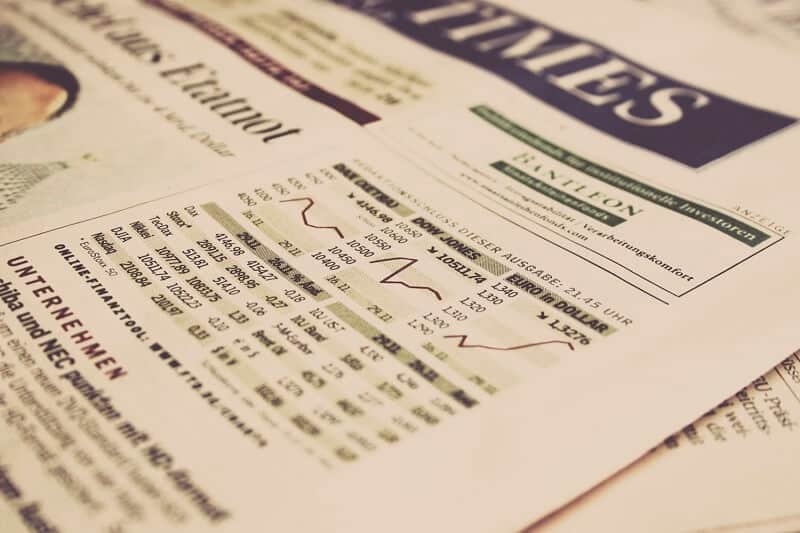
Online brokers will not add more pain to your trade. Contrary, they will help you to enter an order and place a trade to buy stocks.
By Guy Avtalyon
Technology has entered a new epoch in the investing world. We are trading stocks from our room, in real-time. Most of the online brokers take zero commissions. But how to choose an online broker in 2020? How to find the best one? Well, we can give you some hints and suggestions but most of that job is up to you. Choosing an online broker depends on various factors but most important is that your choice fits your goals.
Different brokers will offer you basically the same services, tools, features, and almost the same fees. Well, that’s the competition.
The answer to the question “How to choose an online broker” depends on what type of trading you want.
Some brokerages have a more comprehensive offer in investment strategies. Others will offer only one niche, for example, options trading. So, there is almost no need to ask how to choose an online broker, right? Of course, this is a completely wrong answer. Among numerous excellent brokers, you can find scammers too, so keep your eyes open.
Our aim at Traders-Paradise is to provide true and comprehensive data for online brokers we tracked and examined. So let’s see how to choose an online broker in 2020, what criteria to use, how to determine if some is better than the others. Also, you can visit our Wall of Fame or Wall of Shame to check your picks.
How to choose an online broker?
For a long time, investors need advice and human advisors. They are still valuable, but who has sufficient time to have long chats with advisors? Modern investors use online brokers because of their simplicity. They have all investing tools that may assure your trade, can teach you how to identify your options, how to enhance your trading skills.
Everyone would like to grow wealth and to do so with minimum risks. By using some of the online trading services you are on a good path. No matter if you have an individual trading account or a trading account related to your retirement plans.
Using the tools accessible through an online broker offers you can control your investments. Don’t you think it is a clever way?
Let’s say as an example, the market turns quickly, and you have to act quickly. But, you have to call your advisor and make an appointment. It can take days, weeks until that happens because you are not the only client. But you are in a big hurry, your investment may be ruined, you can lose all your money. You need that help immediately! With human advisors, you will never or rarely have that kind of assistance.
They are expensive too. They will charge you fees, a percentage of your portfolio. As a trader, you have bad and good years. How much these fees can drain your portfolio over the bad years when you have smaller gains? A lot. The online broker will charge you a fee for sure, don’t worry. They will charge you per trade which is beneficial for traders that don’t trade frequently.
Define your goals before choosing an online broker
This is very important. You MUST know your priorities before picking an online broker. If you are an investor with a long-term horizon and have a portfolio with only a few stocks you are not interested in saving a few dollars per trade. You will seek a good research tool to find a stock with the best potential for your long-term goals. In other words, you would prefer an online broker that offers large data.
But, if you trade very often and read financial news through different media and sources, your priority can be the cost per trade.
What to look at when choosing an online broker?
As we mentioned, depending on your knowledge and how frequently you trade, you might seek for something different than others when choosing a broker. Basically, it is personal. But several things are common for all of us. You must be sure that your broker has valuable tools and accessible news, updated in real-time that you can freely research. The number of securities and funds available is also important because you wouldn’t like restriction in any sense. For new investors that enter the stock market for the first time, it is very important their broker will not require a great initial investment. So, you have to seek for minimum investments. Fees are a big issue too. You can easily find a broker with minimum fees. But be careful, sometimes it is better to pay more for better service. In the long term, it can benefit you.
The Internet has made it more accessible and less costly to buy anything online, so stockbrokers must make it less costly for investors to purchase stocks or funds or bonds. But one feature is what makes investing so great today. It is automatic investing. Find a broker that offers this. It’s a wonderful thing thanks to the internet that you can complete your trade from your home or office or from any place on the globe since there are plenty of brokers that will offer you a chance to trade from your self phone.
And read, not only books (that is MUST), read reviews. Other people’s experiences sometimes are a cornerstone of our decisions. Watch out! If you notice a red flag stay away.
Investment minimums
Some brokers require a minimum investment amount. Investment minimums can be an issue if you don’t have enough money. Also, that can limit you if you plan to size your investments gradually rather than invest huge capital in the beginning. Read the fine print on your broker’s website because maybe it isn’t visible at first glance that charges fees if your balance falls below a specified amount.
Also, you must know everything about maintenance or inactivity fees.
It can be frustrating if you didn’t know that you have to pay in such cases. You would like to have an online broker that gives you access to the premium features. Remember, while one broker keeps them locked the other will give you full access without additional fees for the same premium features. Of course, you have to be reasonable and not demand some expensive features like some special charting or something similar. It is time to say something about margin fees. You must understand that trading on margin is costly and carries potential risks. Always check how high the margin fees are. Don’t be surprised.
How to choose an online broker can be a tricky part of your investing.
If you want to use some brokerage’s service for trading you have to know that price isn’t everything. By the way, everyone likes to find a broker with zero fees for trades. Of course, it is impossible if you want a respectable and trustworthy broker. You’ll have to pay something if you want to earn, right? Well, most online brokers will not charge you commissions, so you have to take care of the quality of the features they are offering. The available research, tools that will help you to learn to trade are valuable assets for beginners but for elite traders too. Just keep that in mind when deciding how to choose an online broker. They will help you to buy stocks.



















